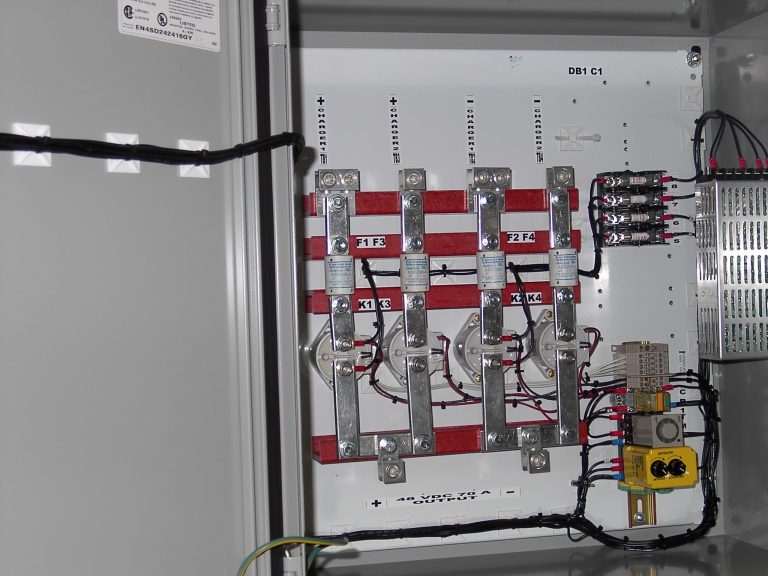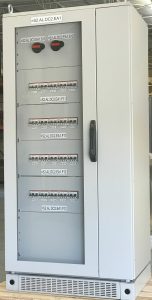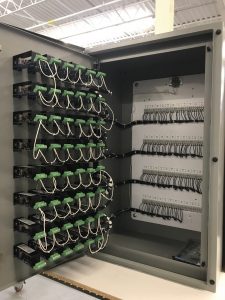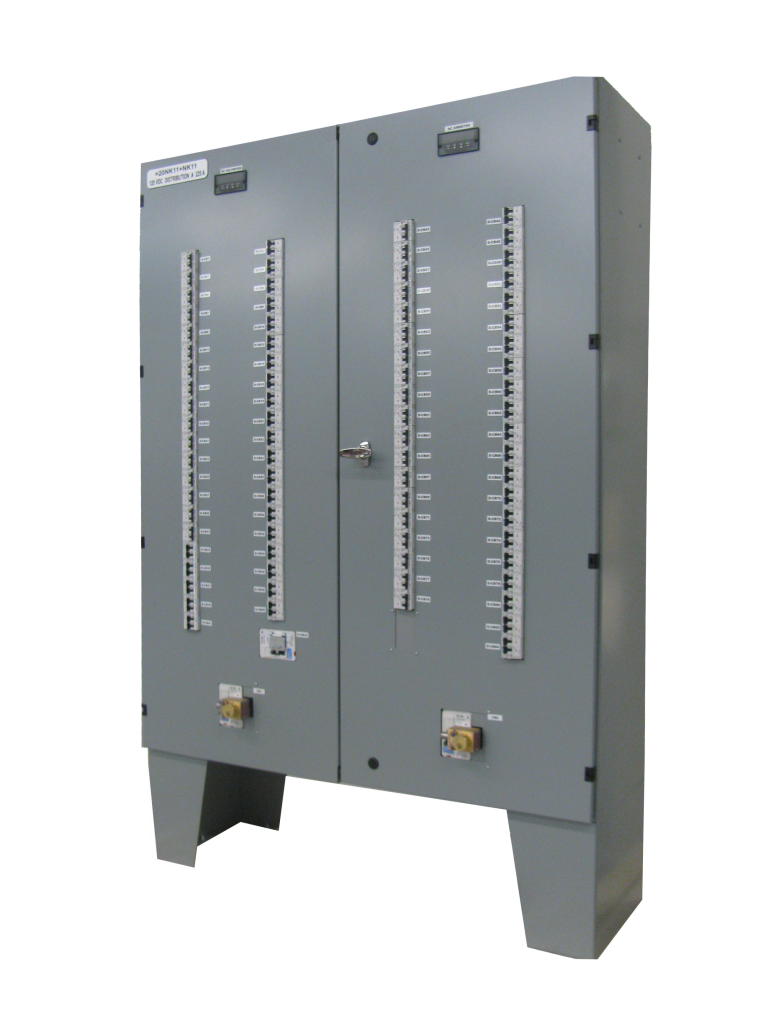How to protect your critical loads?
Primax critical distribution panels offer the most efficient way to protect your critical loads. The option of using a combination of branch fuses in series with circuit breakers achieve ultimate protection when it comes to protecting AC or DC critical loads fed by UPS and battery systems.
Difference between breaking a current in ac and dc applications:
In ac application, the current naturally crosses zero every half cycle which helps to extinguish the arc during a short circuit event. in direct current, there is no such zero crossing: To help the short circuit arc extinction, the current needs to be reduced to zero by adequately opening the protection device. The system voltage level plays a big role in the short circuit breaking. Therefore, it’s recommended to use protection devices rated to the highest system dc voltage and available kA. A very common mistake is to use the nominal voltage rating as a guide (ex. 125Vdc) when the battery system is operating in the float or in the equalize mode at a higher value (ex. 138Vdc-145Vdc).
How it works:
DC systems consist of many energy dc sources connected in parallel: chargers, batteries and inductive loads providing energy during breaking. In one typical plant, we may find 2 chargers, 1 battery and few motors connected to the same dc bus. Depending on the short-circuit location, one or more of these loads may actively contribute in the short-circuit current. The different combinations and the worst case scenario should be considered when selection and coordination of over-current protective devices is done: Each of the loads has its own specifics during a short circuit event.
Contact manufacturers to define the short circuit current capabilities of each connected device. Usually, the data shows the current amplitude and the time constant each device can provide at its terminals. In a short circuit event, the current starts rising in function of the time constant of the circuit. Not to forget the effect of the interconnection cable impedance should be considered during this evaluation. Check the data sheets for the value of the impedance based on the cable gauge and its length and apply Ohm’s Law.
While the national safety codes provide the basic requirements for over-current protection devices (OCPD), breakers and fuses are available to provide overload, short-circuit and ground fault protection in power distributions systems.
Circuit breaker vs. fuses
Usually, loads circuit breakers may take few cycles to trip, risking a load disruption and load reset. faulty load may drain or affect DC bus voltage disrupting the other DC loads. Fast acting fuses operate in a sub-cycle period of time, typically in 10ms periods.
A well sized and coordinated fuse/breaker can easily prevent undesired loss of critical loads.
At Primax, selective coordination and sizing of OCPD is closely done with the sizing of the DC system components.






